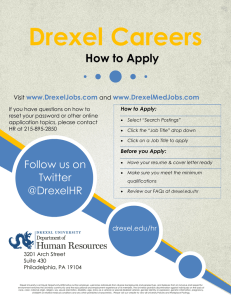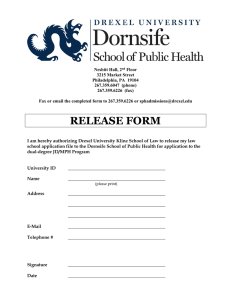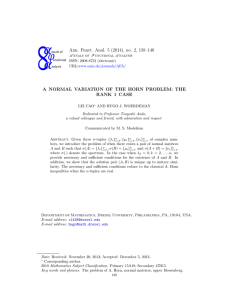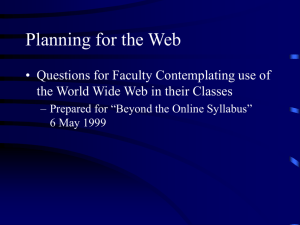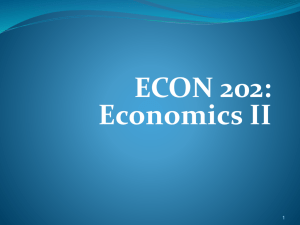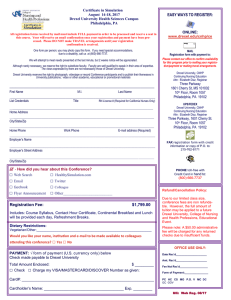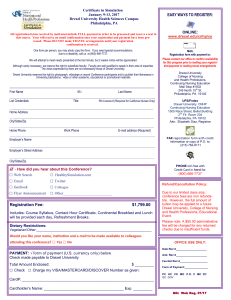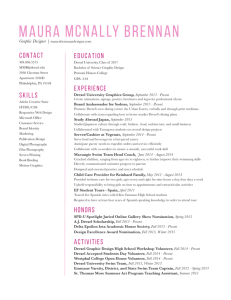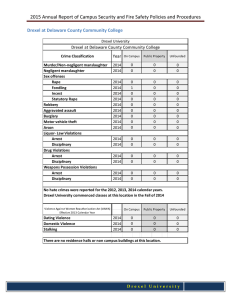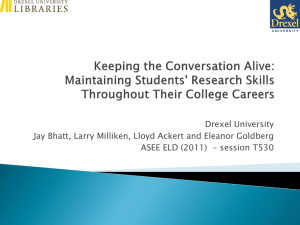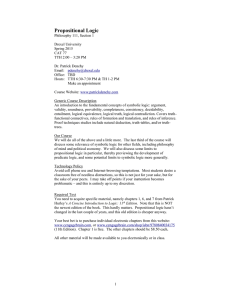individual technology portfolio sam - IntegratingTech310-12
advertisement
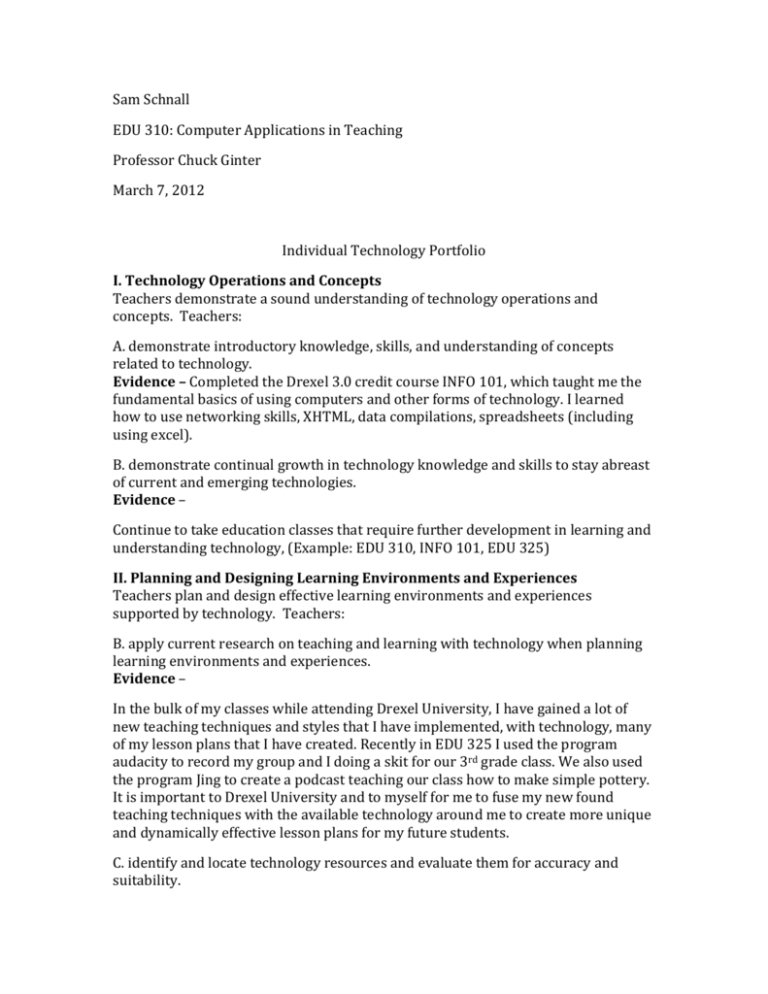
Sam Schnall EDU 310: Computer Applications in Teaching Professor Chuck Ginter March 7, 2012 Individual Technology Portfolio I. Technology Operations and Concepts Teachers demonstrate a sound understanding of technology operations and concepts. Teachers: A. demonstrate introductory knowledge, skills, and understanding of concepts related to technology. Evidence – Completed the Drexel 3.0 credit course INFO 101, which taught me the fundamental basics of using computers and other forms of technology. I learned how to use networking skills, XHTML, data compilations, spreadsheets (including using excel). B. demonstrate continual growth in technology knowledge and skills to stay abreast of current and emerging technologies. Evidence – Continue to take education classes that require further development in learning and understanding technology, (Example: EDU 310, INFO 101, EDU 325) II. Planning and Designing Learning Environments and Experiences Teachers plan and design effective learning environments and experiences supported by technology. Teachers: B. apply current research on teaching and learning with technology when planning learning environments and experiences. Evidence – In the bulk of my classes while attending Drexel University, I have gained a lot of new teaching techniques and styles that I have implemented, with technology, many of my lesson plans that I have created. Recently in EDU 325 I used the program audacity to record my group and I doing a skit for our 3rd grade class. We also used the program Jing to create a podcast teaching our class how to make simple pottery. It is important to Drexel University and to myself for me to fuse my new found teaching techniques with the available technology around me to create more unique and dynamically effective lesson plans for my future students. C. identify and locate technology resources and evaluate them for accuracy and suitability. Evidence – Recently assigned in my EDU 310 class, Computer Applications in Teaching, I completed a Software Evaluation Form on the software program Jing and presented it to the class. Additionally, I observed during other students’ presentations of their Software Evaluation Form. III. Teaching, Learning, and the Curriculum Teachers implement curriculum plans that include methods and strategies for applying technology to maximize student learning. Teachers: A. facilitate technology-enhanced experiences that address content standards and student technology standards. AND C. apply technology to develop students’ higher order skills and creativity. Evidence – While creating one lesson plan for the class EDU 325, I had my students research about a particular Native American tribe using book and technology resources as references. Using their new found information, through their research findings, students then were given the option to create a podcast of a historical event they researched about their tribe, using audacity to recite a famous folk tale that their tribe was famous for, or using Imovie to film and create a skit that was based off a historical event that was important to their specific tribe. This particular lesson plan calls upon students to practice researching and with their new found information choose a platform of technology to display their findings. IV. Assessment and Evaluation Teachers apply technology to facilitate a variety of effective assessment and evaluation strategies. Teachers: A. apply technology in assessing student learning of subject matter using a variety of assessment techniques. Evidence – Recently in EDU 325, my group and I finished creating our DDDE model presentation which requires each section of the model to be submitted to the teacher before each student can move onto the next section. Some of the assessment techniques that are used in this particular assignment are creating rubrics, peer evaluations, and a self-assessment. C. apply multiple methods of evaluation to determine students’ appropriate use of technology resources for learning, communication, and productivity. Evidence – As referenced above some of the evaluations that were used in the assessment of each students projects were rubrics on each technology that was being used in the project, peer evaluation, and self assessment. Students were graded on how they used each technology and how well they knew each technology, showing the teacher their mastery of that specific software or the lack their of. V. Productivity and Professional Practice Teachers use technology to enhance their productivity and professional practice. Teachers: A. use technology resources to engage in ongoing professional development and lifelong learning. Evidence – Through my four-year tenure at Drexel I have participated in courses that utilized online platforms such as, BB Vista, Drexel Blackboard, and Wikispaces, in order to engage in online discussions, discussion posts, and other educational activities. VI. Social, Ethical, Legal, and Human Issues Teachers understand the social, ethical, legal, and human issues surrounding the use of technology in PK-12 and apply that understanding in practice. Teachers: B. apply technology resources to enable and empower learners with diverse backgrounds, characteristics, and abilities; C. identify and use technology resources that affirm diversity; AND D. promote safe and healthy use of technology resources Evidence – For the undergraduate Drexel University courses, EDUC 216: Diversity and Today’s Teacher and EDUC 475: Conflict Resolution and Preventing School Violence I have completed presentations which address issues like bullying, specifically cyber bullying, and include online resources as tools to affirm diversity.
